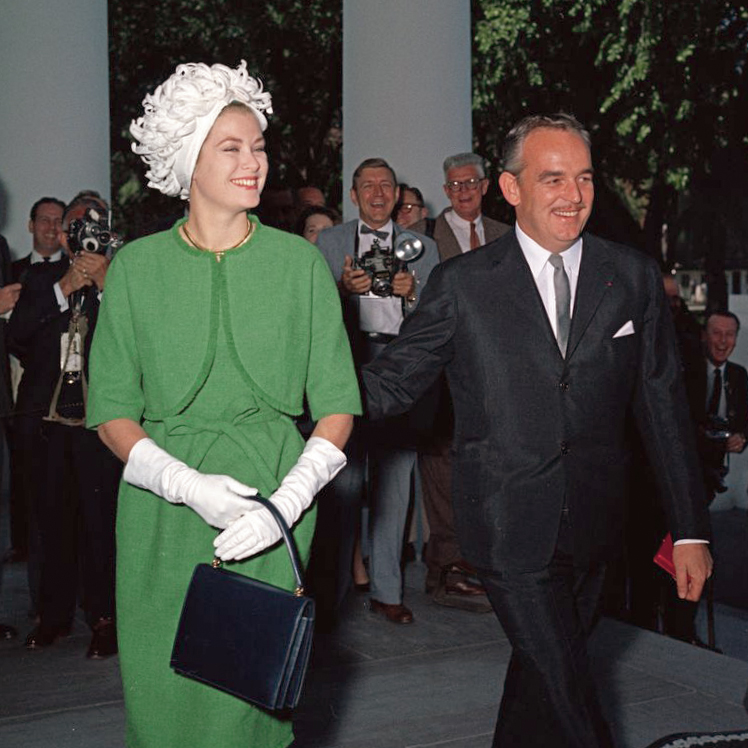Irish musician and folklorist Mick Moloney recalls a time when he was still living in Philadelphia, and L.A.H. O’Donnell, who had retired from EMI Records and lived in Chestnut Hill, contacted him with an intriguing offer: a vast trove of Irish-American sheet music.
“He was offering the collection for $3,000,” Moloney says. “Well, at the time, I didn’t have $300.”
Scholar that he was and is, Moloney looked about for another suitable home for the music, which hearkened back to the Tin Pan Alley days and a little before. No one, including the Smithsonian, had the budget. That was the last he heard of the music, although he never forgot about the offer.
Ten years later, when his circumstances had improved, he called O’Donnell again.
“I asked, ‘Is that collection still for sale?’ He said, ‘Mick, you’re one week too late. Someone just bought it.’”
That someone, as it turns out, was none other than Her Serene Highness Princess Grace of Monaco. The collection is now part of the Princess Grace Irish Library.
But it looks like Moloney is going to get another crack at that music—in a way. Last year, Dr. Joseph Lennon, Ph.D., director of the Center for Irish Studies at Villanova University, contacted Moloney and asked him whether he would perform and discuss some of the songs. “He said, ‘Are you familiar with it?’ You couldn’t make a thing like this up. It’s the weirdest thing I’ve ever heard of, let alone been involved in.”
Moloney, together with world-class fiddlers Liz Hanley and Athena Tergis, will present the program Wednesday, March 6, at 6 p.m. at the restored Kelly House in Philadelphia’s East Falls neighborhood. (Editor’s note: No more seats are available.)
Though traditional Irish music is Moloney’s stock in trade, the music of Tin Pan Alley, depicting a formulaic, romanticized version of “the ould sod,” and often written by someone with no Irish heritage, has always fascinated him.
“I like to try to bring people into the story of how that music was written, and why it was written that way,” Moloney says. “It’s really an invented reality, an invented past.” People who emigrated from Ireland—or anywhere else in the world, for that matter—were often traumatized by the past, he says, “and they didn’t want to relive that trauma. That’s why these tropes of nostalgia became popular. What they were able to pack into those three-and-a-half-minute songs was extraordinary.”
The Kelly House is a particularly appropriate venue for this presentation, says Dr. Lennon.
“When Prince Albert and Monaco decided to purchase the house, which had been the family house, they reached out to us to see if we could help them do some Irish-American programming there. The goal was to set up a partnership that would be a sort of triangle between Monaco, Ireland, and Philadelphia and the Kelly House. Institutionally, there’s another triangle, and that’s the Princess Grace Irish Library, the Kelly House and Villanova Center for Irish Studies.
“Villanova has a longstanding Irish studies program, and also a vibrant theater and arts program, but we’re also interested in promoting the Irish arts, and the Kelly House has been a place where we can have events off-campus. Usually we have students and Villanova alumni and faculty, but also people from the Irish-American community.”
The goal, Dr. Lennon says, is to have a place to host two or three events a semester—smaller, special events.
Other groups have hosted events there, he notes, including the Duffy’s Cut program, which sponsored a fund-raiser for that unique archeological effort.
For his part, Moloney is looking forward to an opportunity to discuss and perform music from the Princess Grace Irish Collection in that very house, a small but significant Philadelphia landmark.
“I can thank that man O’Donnell from Chestnut Hill and certainly Grace Kelly for their foresight, for knowing what was important,” Moloney says. “She was a woman before her time. I’m impressed that she would commission this.”

